Who is here? 1 guest(s)
|
Potamia littoralis, Muscidae, Hungary, March 2007
|
|
| Xespok |
Posted on 20-03-2007 19:08
|
|
Member Location: Posts: 5550 Joined: 02.03.05 |
I collected this specimen (in a very bad condition) and try to key it. If I had not done a major mistake this should be a Phaonia sp, it has the Phaonia bristle on the hind leg. Does not look like one though.
Edited by Xespok on 16-04-2008 20:14 Gabor Keresztes Japan Wildlife Gallery Carpathian Basin Wildlife Gallery |
|
|
|
| Xespok |
Posted on 20-03-2007 19:09
|
|
Member Location: Posts: 5550 Joined: 02.03.05 |
Another view.
Gabor Keresztes Japan Wildlife Gallery Carpathian Basin Wildlife Gallery |
|
|
|
| Xespok |
Posted on 20-03-2007 19:09
|
|
Member Location: Posts: 5550 Joined: 02.03.05 |
And a third view.
Gabor Keresztes Japan Wildlife Gallery Carpathian Basin Wildlife Gallery |
|
|
|
| Nikita Vikhrev |
Posted on 20-03-2007 20:55
|
|
Member Location: Posts: 9193 Joined: 24.05.05 |
Gabor, my test it is Anthomyiidae, may be Hylemyza. Nikita Nikita Vikhrev - Zool Museum of Moscow University |
|
|
|
| Xespok |
Posted on 20-03-2007 21:13
|
|
Member Location: Posts: 5550 Joined: 02.03.05 |
Thx Nikita, I was really looking for the anal vein, whether it reaches the margin of the wing or not. On the specimen it is not absolutely clear, it reaches very far, but maybe not to the very edge. On the other hand the body is quite slim, so Anthomyiidae is a good idea. This is one of the largest Anthomyiids then.
Gabor Keresztes Japan Wildlife Gallery Carpathian Basin Wildlife Gallery |
|
|
|
| Nikita Vikhrev |
Posted on 20-03-2007 21:21
|
|
Member Location: Posts: 9193 Joined: 24.05.05 |
Hylemyza is a large one - about 8mm.
Nikita Vikhrev - Zool Museum of Moscow University |
|
|
|
| Xespok |
Posted on 20-03-2007 21:27
|
|
Member Location: Posts: 5550 Joined: 02.03.05 |
Hylemyza partita should be the only species in Hungary. Your image of H. partita in the gallery, however, looks slightly different from my images, not the different eye shapes for example. But maybe I am fooled by the different angles of the photos.
Gabor Keresztes Japan Wildlife Gallery Carpathian Basin Wildlife Gallery |
|
|
|
| Nikita Vikhrev |
Posted on 20-03-2007 21:57
|
|
Member Location: Posts: 9193 Joined: 24.05.05 |
Gabor, I do not at all insist on Hylemyza. You have specimen in your hand, I'm waiting for your result... Nikita Vikhrev - Zool Museum of Moscow University |
|
|
|
| Xespok |
Posted on 20-03-2007 22:32
|
|
Member Location: Posts: 5550 Joined: 02.03.05 |
But I have nothing on Anthomyiidae (and the specimen is in really bad shape.) Gabor Keresztes Japan Wildlife Gallery Carpathian Basin Wildlife Gallery |
|
|
|
| Susan R Walter |
Posted on 21-03-2007 14:07
|
|
Member Location: Posts: 1794 Joined: 14.01.06 |
Gabor Michael Ackland will send you his Anthomyiidae key if you contact him. I don't have his email address at work, but could send it to you from home. I know Nikita has his key, so if he is online before me, he could give you the address. I find that the anal vein often doesn't really reach the margin. The distinction is really a question of whether it is a relatively long anal vein or a relatively short one. I find it is helpful to also check the underneath of the scutellum. Many anthos have sparse small stiff downward pointing hairs around the bottom edge of the scutellum and muscids never have this feature. See http://www.nku.ed...milies.htm for some helpful comparison closeups. Susan |
|
|
|
| crex |
Posted on 21-03-2007 15:05
|
|
Member Location: Posts: 1996 Joined: 22.05.06 |
Could Michael Ackland (mackland [at] btinternet [dot] com) be persuaded to place the key on diptera.info? |
|
|
|
| Susan R Walter |
Posted on 21-03-2007 21:18
|
|
Member Location: Posts: 1794 Joined: 14.01.06 |
Crex I don't know. I have corresponded a couple of times with Michael Ackland, but I do not know him personally. Perhaps Paul or someone on the forum who does know him could ask? Susan |
|
|
|
| Xespok |
Posted on 24-03-2007 10:48
|
|
Member Location: Posts: 5550 Joined: 02.03.05 |
I now have some literature, so I'll try to do my best.
Gabor Keresztes Japan Wildlife Gallery Carpathian Basin Wildlife Gallery |
|
|
|
| Stephane Lebrun |
Posted on 23-02-2008 00:06
|
|
Member Location: Posts: 8248 Joined: 03.03.07 |
I came across this thread searching for Hylemya, and this fly attracted my attention. The strong frontal bristles reaching up to the ocelar triangle made me think about Potamia, Muscidae (a feature of the genus). The rather large calypters and the 4 dc speaks more for Muscidae as well. That would explain also the Phaonia bristle, since it was formerly in Phaonia, then in Dendrophaonia. So, I think it's Potamia littoralis. Nikita found it four months later, and if you watch in the gallery, they're quite identical in profile view ! Edited by Stephane Lebrun on 23-02-2008 00:09 Stephane. |
|
|
|
| Xespok |
Posted on 23-02-2008 12:18
|
|
Member Location: Posts: 5550 Joined: 02.03.05 |
Thx Stephane. I always felt rather uneasy this being an Anthomyiid fly. The fly has the typical Azeliinae jizz.
Gabor Keresztes Japan Wildlife Gallery Carpathian Basin Wildlife Gallery |
|
|
|
| Michael Ackland |
Posted on 23-02-2008 16:44
|
|
Member Location: Posts: 680 Joined: 23.02.08 |
Could be Trichops (Muscidae). I do not think it is Anthomyiidae, because the hind metatarsus does not seem to have a basal ventral seta, present in nearly all anthos. The lower calypter looks large, and the profile of the head in one photo has frontal setae on whole length. Also the hind tibia shows 4-5 av setae. A good character for Trichops is the presence of setulae on the hind coxae (inner margin) never present in anthos. Unfortunately definitive charactersa for anthos are not generally visible in general photos, i.e. number of dorsocentrals, anal vein length, leg chaetotaxy, aristal hair length etc. (Always out of focus). I suggest you capture the specimen, and use my keys, now available on the tachinid web site. Trichops species are very similar to some anthos in general appearence especially if slim species. |
|
|
|
| Xespok |
Posted on 23-02-2008 17:03
|
|
Member Location: Posts: 5550 Joined: 02.03.05 |
Michael, thx for the int? Is it Chris Raper's site that you refer to as the Tachinid web site?
Gabor Keresztes Japan Wildlife Gallery Carpathian Basin Wildlife Gallery |
|
|
|
| Michael Ackland |
Posted on 23-02-2008 17:28
|
|
Member Location: Posts: 680 Joined: 23.02.08 |
Yes. tachinidae.org.uk Click on Tachinidae and down to Anthomyiidae |
|
|
|
| jorgemotalmeida |
Posted on 23-02-2008 18:05
|
|
Member Location: Posts: 9295 Joined: 05.06.06 |
 Rise all Anthomyiids posts. Rise all Anthomyiids posts.  I will post photos in 2 hours from Anthomyiids... |
|
|
|
| Nikita Vikhrev |
Posted on 23-02-2008 20:27
|
|
Member Location: Posts: 9193 Joined: 24.05.05 |
I agree with Stephane, Potamia littoralis seems solve all questions. Nikita Nikita Vikhrev - Zool Museum of Moscow University |
|
|
|
| Jump to Forum: |


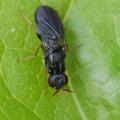



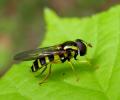
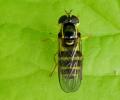

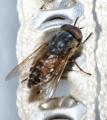
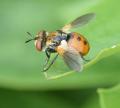



 but don't see the image in the post.
but don't see the image in the post.